Did you know Taunton once had its own summer destination amusement park?
TAUNTON — If you grew up on the SouthCoast, you have no doubt heard of Lincoln Park in Dartmouth.
Even those of us who were born just a smidge too late to enjoy Lincoln Park while it was still open remember being able to see the Comet roller coaster from afar. At least, until it was torn down in 2012.
But did you know that Taunton once had its own destination amusement park?
It didn’t have its own Comet, but the park at Lake Sabbatia drew thousands of visitors all the same, looking to enjoy an afternoon or evening of open-air theater, or a turn on the merry-go-round, or even a scenic tour of the lake while enjoying a treat from the concession stand.
At one point, Sabbatia Park was the place to be, not only in Taunton, but for miles around.
What was it like there?
Curious Taunton explores some of the history behind Sabbatia Park:
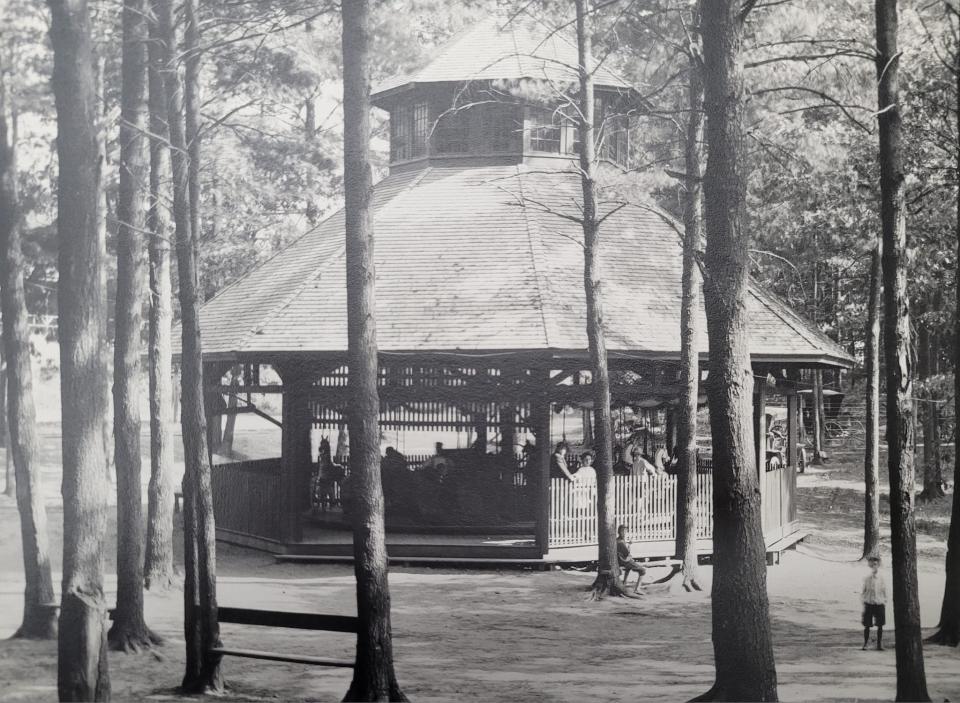
How did Sabbatia Park get started?
In the beginning, there wasn’t even really a lake.
Sabbatia Lake had to be created before there could ever be a park.
According to an Aug. 22, 1959 article, “Happy Memories Linked To Old Sabbatia Park,” the body of water began as Scaddings Pond, and then dams were constructed by various Taunton businesses, forming the lake.
In the 1890s, after trolley cars had been established in Taunton, the Taunton Street Railway Company noted a lack of trolley use on weekends.
'I speak to her daily' Taunton quadruplets' family celebrates and mourns on 1st birthday
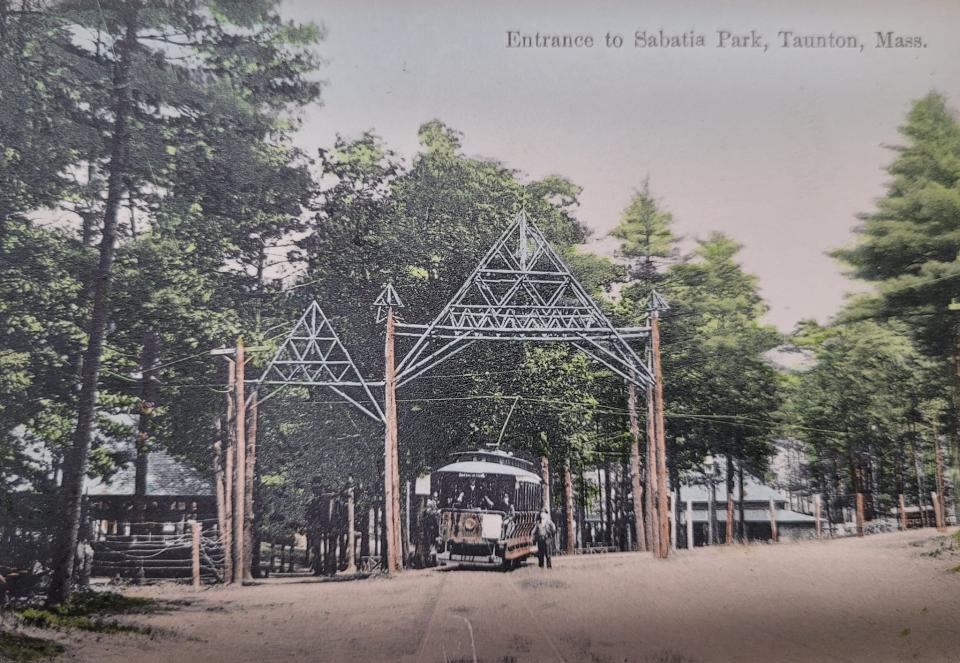
Much like Lincoln Park, which was also established by a trolley company, Sabbatia Park “was one of the first recreational areas to be built by a trolley company to attract local residents to use the trolley other than as a means of commuting to and from work,” according to an Enterprise article from May 4, 1979, written by Charles Crowley.
In 1893, the Taunton Street Railway Company extended trolley tracks to the shores of the lake, and the land that would become Sabbatia Park was purchased that same year by Sylvanus N. Thomas, attorney for the Taunton Street Railway company, according to an Aug. 6, 1949 Taunton Daily Gazette article by Alice E. Berthold.
Curious Taunton: What was Camp Myles Standish, a city in a city that hosted the Red Sox?
Where did the name Sabbatia come from?
According to “Happy Memories Linked To Old Sabbatia Park,” the lake and park were called Sabbatia because of the pink sabbatia flower that grew “profusely” in the water.
However, at the time there were no conservation efforts in place to protect the flower, so between people over-picking it and vendors picking the flowers to sell, by the time “Happy Memories” was written in 1959, the flowers were gone.
What was Sabbatia Park like?
At first, Sabbatia Park was used mostly for picnic grounds, boating, and bathing, according to Berthold. Bathing at the time didn’t always mean “taking a bath,” it could also refer to sea bathing or, as in this case, taking a dip in the lake.
Sabbatia Park was open from Memorial Day to Labor Day, and trolley cars absolutely loaded with people would pack it every weekend.
There was a merry-go-round on the left side of the entrance, which according to Crowley, cost five cents to ride.
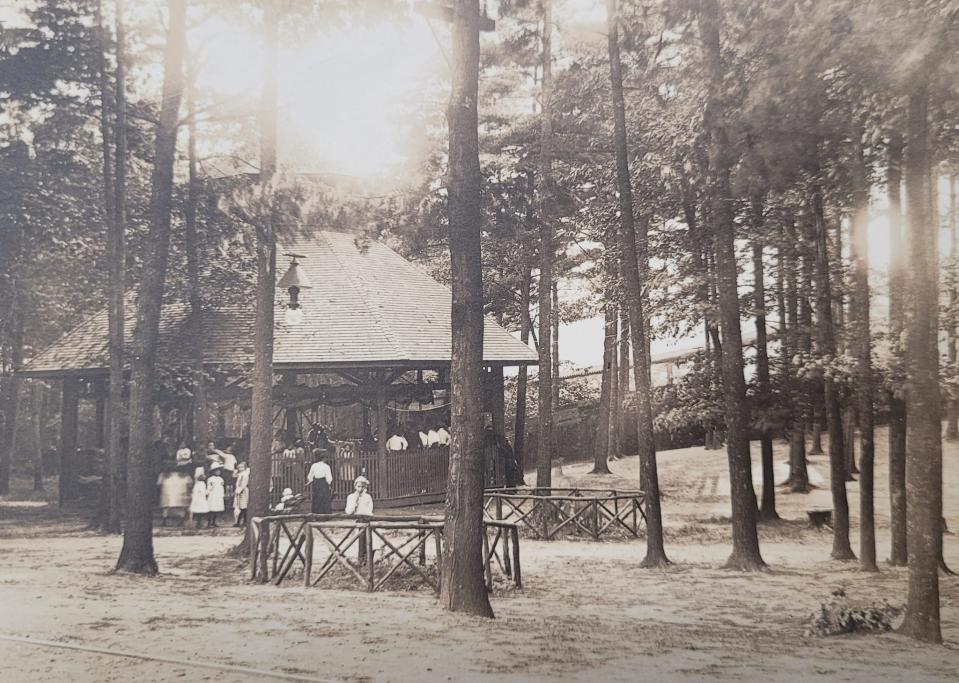
A dance hall at the park could hold about 300 people, according to Berthold.
The concession stand had food and ice cream, and Berthold writes that the ice cream was transported to the park via trolley.
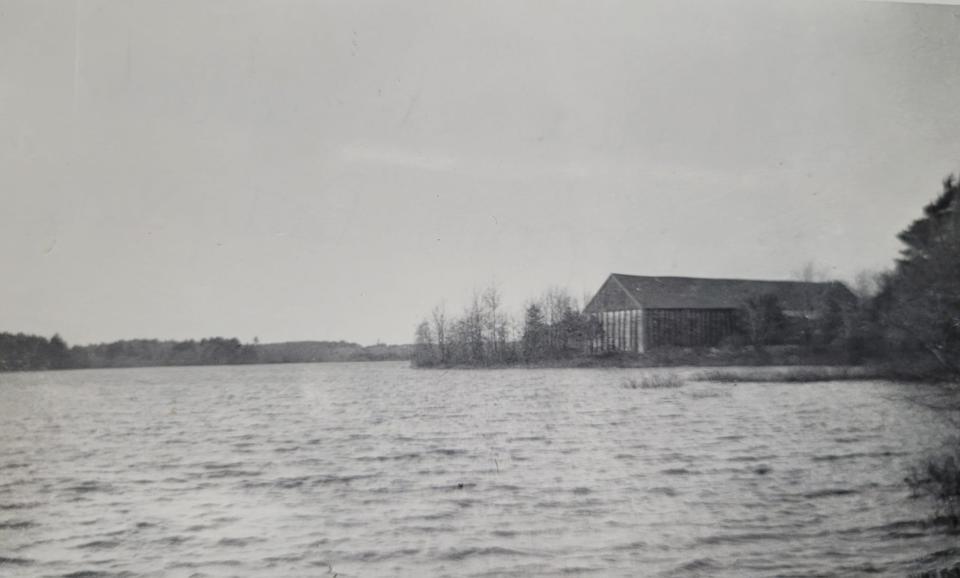
There were bathing houses, a canoe club, ice houses on the lake, a casino (at that time this basically meant a building where there were activities), and even at one point a small menagerie that included monkeys and a bear, according to Berthold.
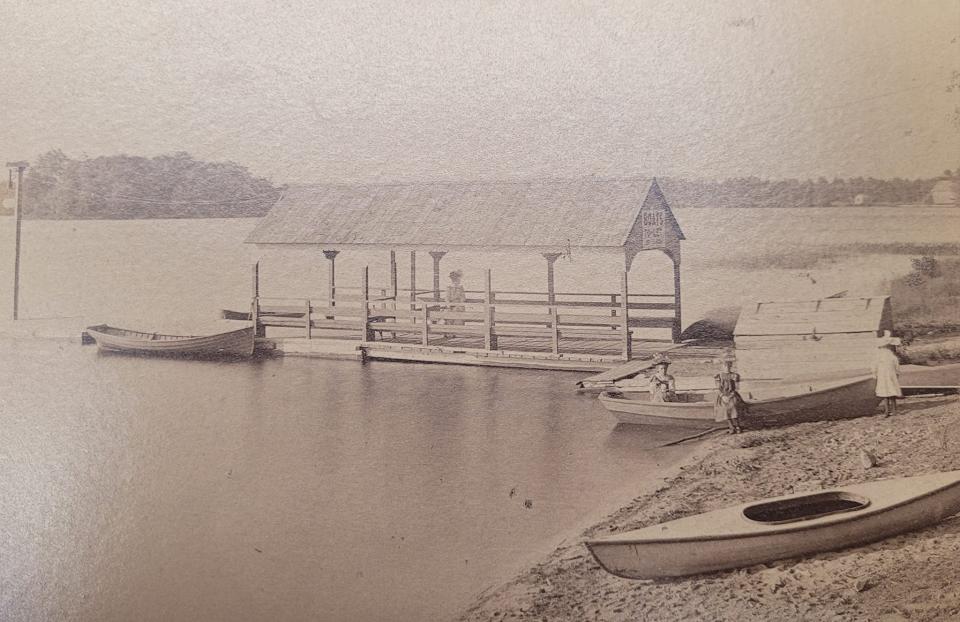
The lake also held swimming and diving contests, and there were bike races at the park, Crowley writes.
A wharf was built into the lake, where guests could board a naphtha launch. A naphtha launch was a boat powered by a naphtha engine. Seating capacity was 20, and for 10 cents guests could enjoy a round-trip scenic tour of the lake.
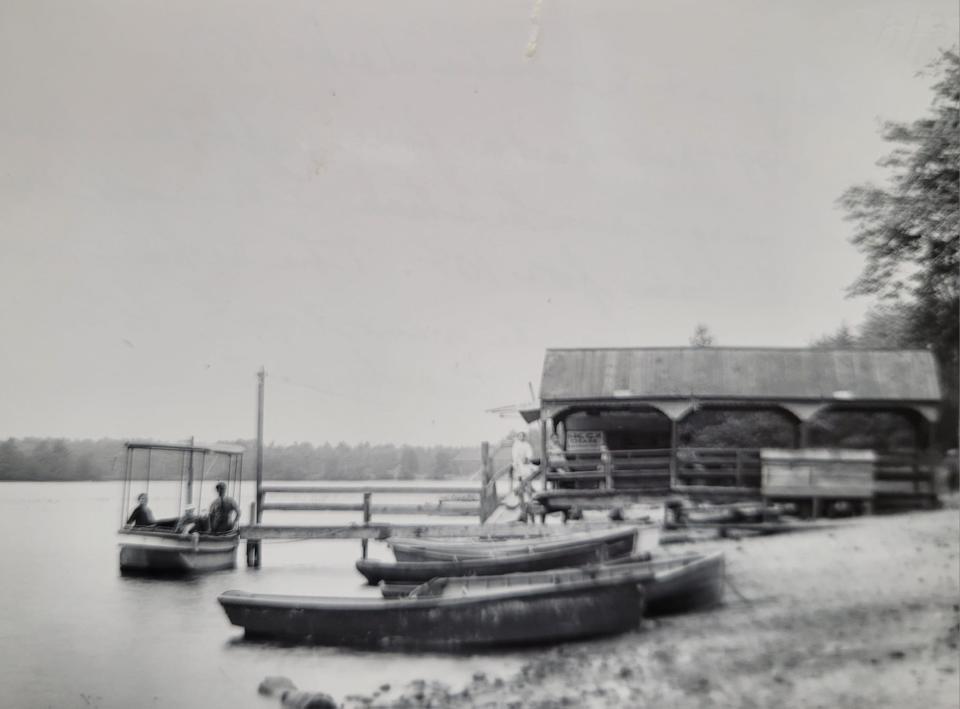
A raft was also built and placed in the middle of lake, and Fourth of July fireworks were launched from there.
In the winter there was a toboggan course, and people slid right out onto the frozen lake.
Berthold writes, “To many Tauntonians in the days of their early youth, Sabbatia Park was THE place to go for an outing.”
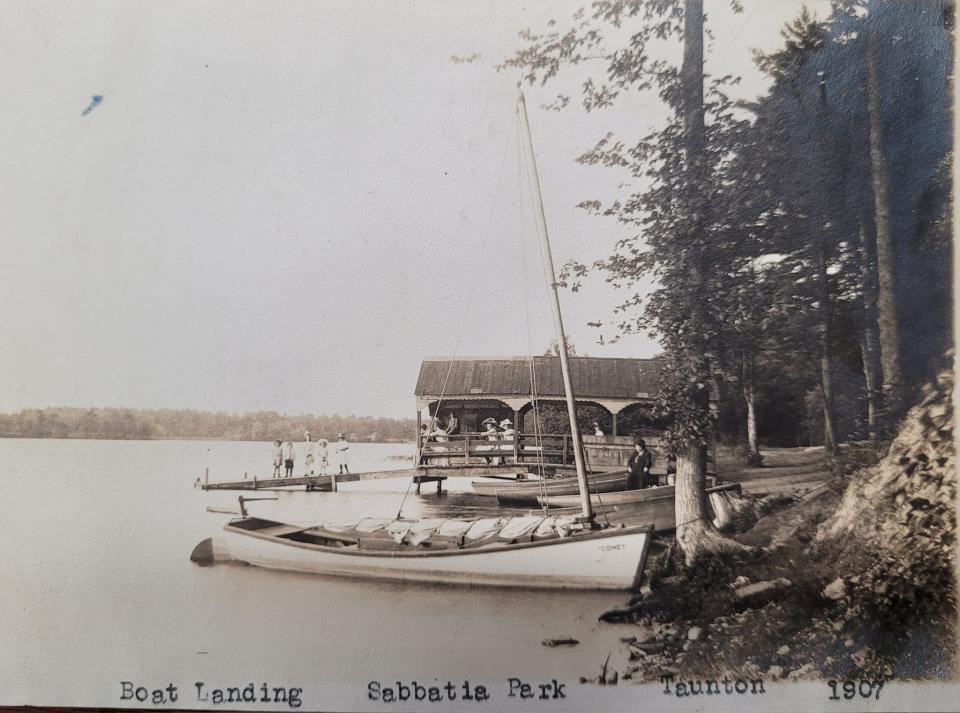
‘Pageant of Patriotism’ at Sabbatia Park
In The Old Colony History Museum’s collection related to Sabbatia Park, there are pamphlets for a “Pageant of Patriotism” that was held there.
Already a popular destination that hosted its own 4th of July fireworks display, Sabbatia Park hosted the pageant for the 4th of July holiday in 1911.
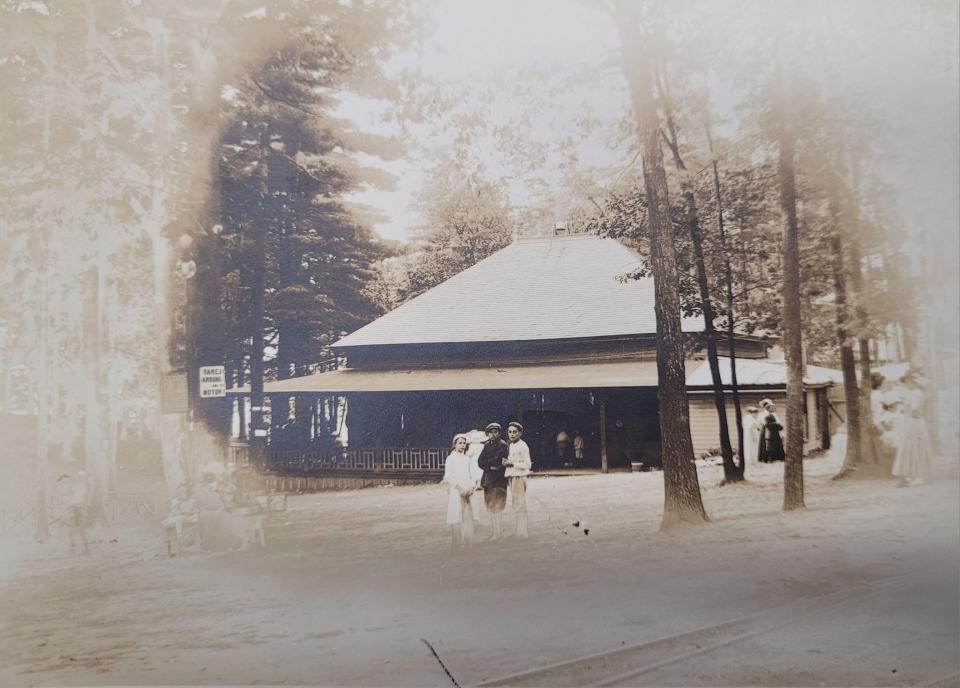
The pageant held performances on July 1, 3 and 4 that year, according to Berthold. It was a history play that began all the way back with Father Time, traced colonialism in America, and culminated with the raising of the Liberty and Union flag in downtown Taunton in 1774.
Berthold also writes that the temperature for a couple of those performance dates was 104 and 105 degrees, difficult enough in modern shorts but surely even more unbearable in the garb of 1911.
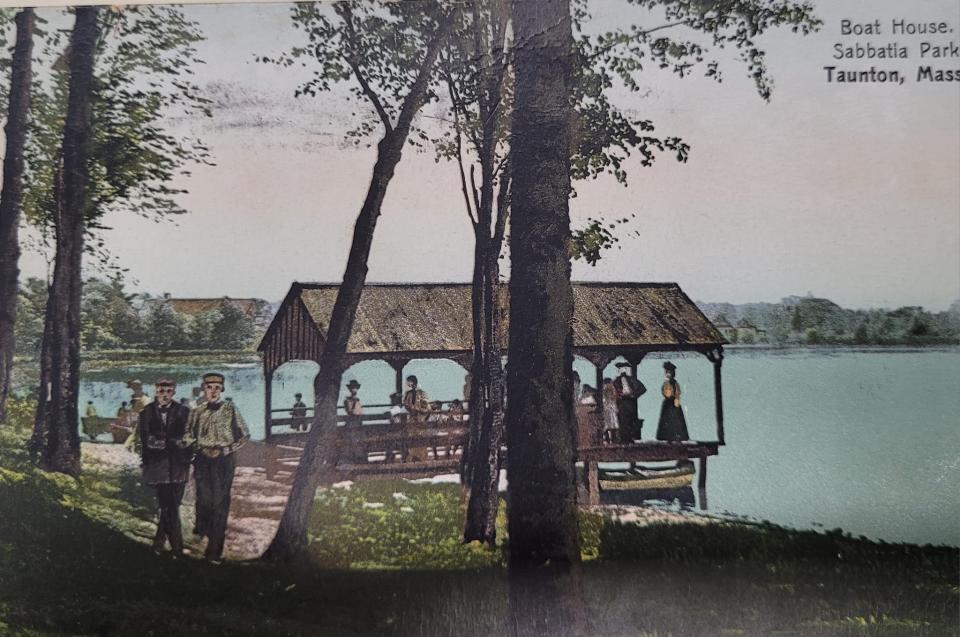
The theater at Sabbatia Park
One of the highlights of the park, other than its natural beauty, was the theater.
Berthold writes that the theater was constructed on the side of a pine-coated hill and seated about 1,100 people.
It cost 30 cents to sit near the stage, 20 cents a little further back, and 10 cents for a seat at the rear.
According to Crowley, the stage was the only portion of the theater that had a roof.
“(T)he seating area had only a canopy of blue skies and the shade of the many tall pines which surrounded the area,” he wrote.
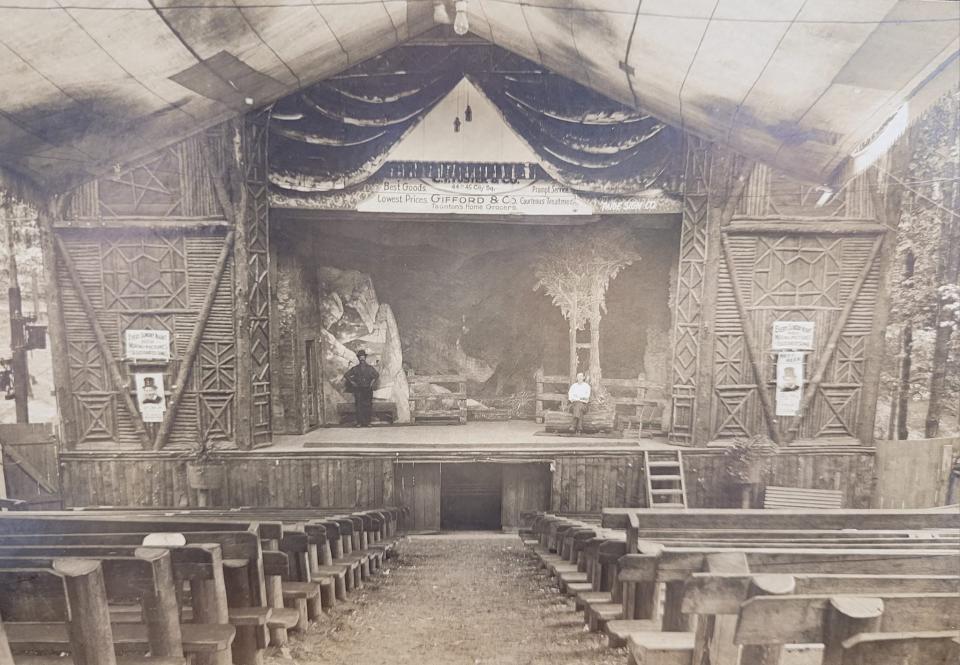
“Sacred concerts” were held Sunday afternoons at 4 p.m.
By far the biggest draw at the theater appears to have been, as was the case in most of the rest of the country at the time, vaudeville.
According to “Happy Memories,” “The Donovan Amusement Co. formed by brothers James and William brought musical comedies and vaudeville to Taunton’s eager audiences.”
Shows changed once a week, and ran for about two hours.
Not everything about the park was idyllic. The vaudeville shows at Sabbatia Park also included the racist minstrel acts that were all-too-typical of vaudeville shows of the time.
Vaudeville’s draw was such that, for one performance at the park, a fake battleship was built so a performer could do a trick where they “walked on water” at Lake Sabbatia.
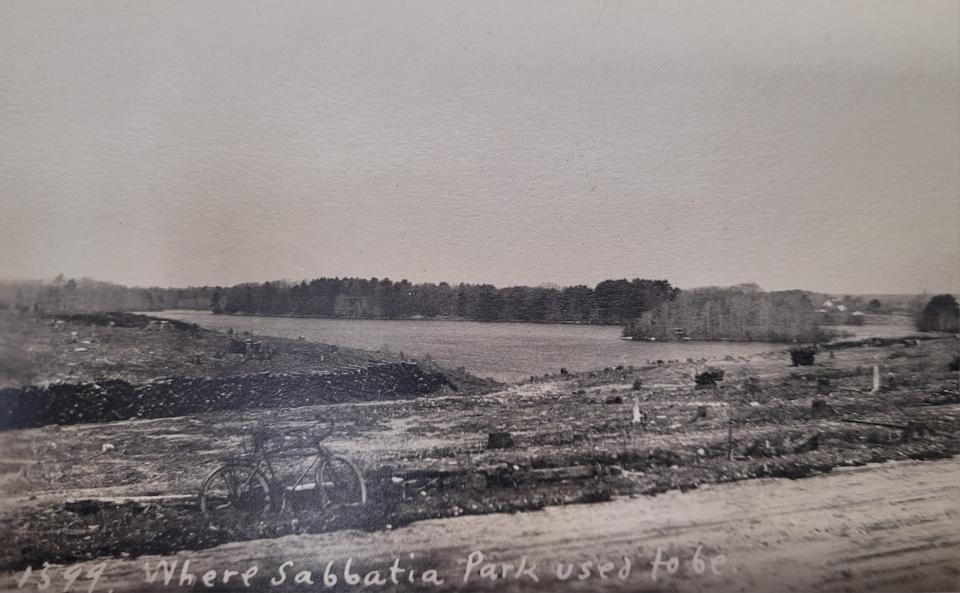
Memories of Sabbatia Park
According to Berthold, Sabbatia Park lasted for around 25 years, “until the time of the consolidation of the street car companies.”
Crowley wrote that the park closed around 1930, which would have put it just past the early days of The Great Depression.
Taunton Then and Now: City's industrial heyday and a history of Winthrop St. Baptist Church
Today, Lake Sabbatia is, of course, still there, and still beautiful.
As for the park, there are memories, and lots of interesting objects related to it at The Old Colony History Museum.
Some of the newspaper ads in the museum's collection are full of vaudeville advertisements, as well as ads for shows featuring “Special Electrical and Scenic Effects,” as mentioned for a production ad for “Miss Venus” in The Taunton Herald-News for July 1, 1908. The ad also makes note of “Moving Pictures and Illustrated Songs.”
OCHM also has a collection of postcards from Lake Sabbatia and Sabbatia Park.
One particularly memorable one, sent by someone to a friend in Middleboro in 1908, doesn’t feel so far removed from our own time:
“Are you alive after your trip? Wouldn’t you like to have more chowder? I’m sure I would. Hope to see you soon.”
Taunton Daily Gazette/Herald News copy editor and digital producer Kristina Fontes can be reached at kfontes@heraldnews.com. Support local journalism by purchasing a digital or print subscription to The Herald News and Taunton Daily Gazette today.
This article originally appeared on The Taunton Daily Gazette: Curious Taunton: The park at Lake Sabbatia was a summer playground

